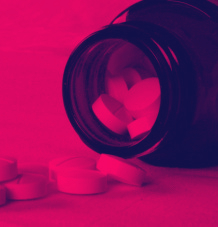Experts urge naloxone scripts
 Experts say doctors should prescribe naloxone when they prescribe opioids.
Experts say doctors should prescribe naloxone when they prescribe opioids.
With the rate of fatal opioid overdoses almost doubling in Australia between 2002 and 2018, a call has been made for the routine co-prescription of emergency reversal agent naloxone to opioid users.
Dr Pallavi Prathivadi, a GP and PhD candidate at Monash University, and Associate Professor Suzanne Nielsen, Deputy Director of the Monash Addiction Research Centre, made the call in a new article for the Medical Journal of Australia.
“Take-home naloxone provided to laypeople to administer in the event of overdose was found to successfully reverse more than 96 per cent of community overdoses in a systematic review,” the authors state.
“The evidence of naloxone’s therapeutic effect and life-saving role has resulted in the drug being carried in most emergency medical kits and included on the World Health Organization Model Lists of Essential Medicines.”
Dr Prathivadi and A/Prof Nielsen said there are some barriers to co-prescribing naloxone.
“An Australian study reported that 78 per cent of patients on Schedule 8 opioids for chronic non-cancer pain qualified for take-home naloxone,” they wrote.
“Yet current national data show that less than 3 per cent of all naloxone supplied is on individual PBS prescriptions, with most naloxone prescriptions accounted for by harm reduction programs. An additional negligible amount of naloxone is sold over the counter by pharmacists.”
Health care provider attitudes towards pharmaceutical opioid-related risk may be contributing to low naloxone prescribing rates, Dr Prathivadi and A/Prof Nielsen wrote.
“The biggest barriers to naloxone prescribing were low levels of awareness about naloxone, and unwillingness by doctors to prescribe it,” the said.
“This may be driven by incorrect beliefs that patients on pharmaceutical opioids are at low risk of overdose, lack of knowledge, and incorrect patient reporting of actual opioid use.”
The language used to talk with patients about opioid and naloxone use is critical, the experts say.
“Sensitivity around language is key to openly communicating with patients about this issue,” the article states.
“Terms like ‘overdose’ still carry considerable stigma and are poorly understood by laypeople.
“A more patient-centred approach (and to avoid having important health messages dismissed as irrelevant by patients), might involve changing our language to use terms like
‘severe opioid-related side effects’ or ‘life-threatening opioid toxicity’ instead of ‘drug overdose’ to explain the same concept.”
Comparing naloxone with intramuscular glucagon for diabetic patients on insulin, or auto-injectable adrenaline for anaphylaxis, may also positively change attitudes towards its prescription.
“Changing the narrative around take-home naloxone from ‘overdose treatment’ to ‘routinely prescribed emergency medication’ may help provider attitudes and encourage the normalisation of naloxone prescribing,” Dr Prathivadi and A/Prof Nielsen wrote.
“Our conservative estimate suggests that about 200,000 naloxone scripts would be indicated annually using this approach, at a cost of $40–50 each on the PBS. This is comparable with the PBS cost of an adrenaline auto-injector or glucagon, which are both listed at $40.
“The estimated volumes of naloxone required would also be similar to combined PBS prescription volumes of glucagon (about 44 000 prescriptions) and adrenaline auto-injectors (about 110 000 adult prescriptions and 28 000 paediatric prescriptions) according to Medicare statistics of PBS prescriptions from July 2019 to June 2020.”
The authors concluded that “GPs and pharmacists should consider discussing and co-prescribing take-home naloxone with opioids for patients with chronic pain”.
“Australia’s increasing prescription opioid overdoses demands this conversation. However, normalising the role of naloxone as a routinely co-prescribed emergency medication will require major changes in community and health care provider attitudes, improved awareness of the role of naloxone, and reduction of overdose-associated stigma. Ongoing collaborative efforts are needed to embrace higher prescribing and dispensing of naloxone.”








 Print
Print